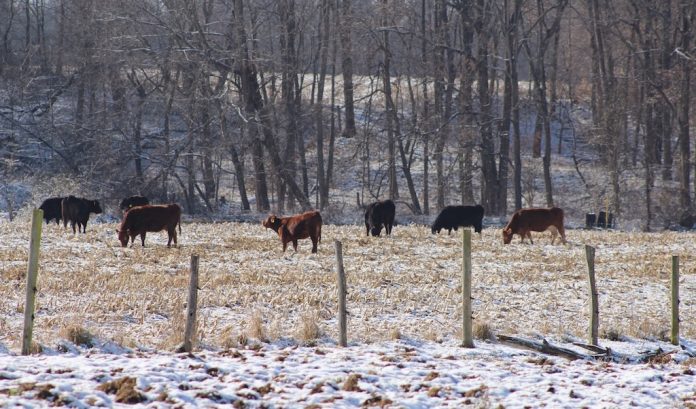The past week has brought a few chilly mornings, as well as the thoughts that winter is coming sooner than we think.
It feels like just last week we were having 70- to 80-degree weather.
The brisk mornings we have had have meant wearing a light jacket on the commute to work, but just because we are cold doesn’t mean our cattle are cold, yet.
Cattle typically have a lower comfort level at around 20 to 30 degrees, as long as the weather conditions are dry with little to no wind chill.
Once the temperature drops below this range, cattle will need more feed for energy, or they will start to use their stored fat to maintain their body temperature.
Plan ahead
Planning for the winter season is always a good idea, especially when it comes to keeping our cows in an adequate Body Condition Score (BCS) range prior to calving. The key to it all, in my opinion, is planning ahead.
It is way easier and less stressful if we have a plan in place and have evaluated the management techniques that we wish to utilize versus riding it out and then discovering a problem. Trying to find a solution in the middle of the cold winter is way more difficult than preventing any problems that could arise in the first place.
BCS Scores
One thing we can do prior to winter feeding is group our cattle with similar BCS scores and feed them accordingly. It can be cost effective because it allows us to adjust thin cows body condition, while feeding fatter cows in a manner that maintains their BCS and not pouring the feed to all of them. Who wants to do that?
Six critical areas
There are six critical areas that we need to look at when body condition scoring cattle. BCS scores allow us to estimate energy reserves in the form of fat and muscle.
Through evaluating the critical areas that include the back, tail head, pins, hooks, ribs and brisket, we can determine the fat cover and place cattle between the range of one to nine — one being emaciated and nine being very fat.
The average beef cow falls between the five to six range and have a good overall appearance with fat over their hooks and pins and their backbones are not visible. Cattle in this range are in the most ideal condition for reproductive health and have little to no problems being rebred.
Bump it up
We tend to consider a change in one BCS unit as being the equivalent of 70-100 pounds. If we have a cow who is a three heading into winter prior to calving, we would like to bump up that BCS score at least to a four if not a five. That is a weight gain range of 70-200 pounds. How much feed do you think that would take to accomplish?
Most of the calf’s growth will occur in the last few months of pregnancy and her nutritional needs will increase as well. It is harder for her body to gain weight during this time, as the growing calf requires more and more of her energy.
She is better off if her BCS is already a little higher before going into the end of her pregnancy. Wouldn’t it be easier (not to mention cheaper) to utilize the resources that we have right on the farm prior to this occurring, such as grouping cows with similar BCS and feeding higher quality feed, utilizing stockpiled forages, feeding corn, and/or early weaning?
Weight through grazing
Spring and fall are the two best seasons that we can add weight through grazing. The grazing method you choose needs to be one that works for you. Every farm and every herd are different.
Just like the answer to the question, “What do I need to do this winter, since hay quality is poor?”, every answer is different because it needs to be tailored to a herd’s individual needs.
There is no quick fix to compensate for the abnormal hay-making season we had this summer. This is where working with your local extension office comes in handy while formulating a plan to accommodate your specific needs.













Good article, thank you author.